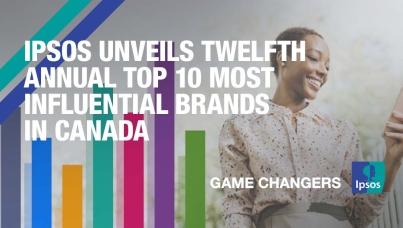Canada's Top Billers Are Talking About EBPP - And Seeking External Expertise
However, consumers and Canada's top billers may not quite be seeing eye to eye in terms of the benefits and concerns of EBPP for the consumer. Six in ten (62%) top billers feel that the convenience of one location is the major benefit to consumers, while only 26 percent of consumers share this point of view. Furthermore, billers may also be misreading the level of concern consumers have regarding security: 82 percent of these billers cite security as the biggest challenge, compared to 50 percent of consumers.
These are just some of the findings of an Optus Corporation/Angus Reid Group study of consumers and Canada's top billing corporations regarding Electronic Bill Presentment and Payment (EBPP). The consumer component consists of 1,500 telephone interviews with Canadians aged 18 and older, conducted between May 4th and May 23rd, 2000. A sample of this size carries an associated margin of error of 1772.5 percentage points, 19 times out of 20. The business component involved 45 25-minute telephone interviews with senior decision-makers representing Canada's top billers. The sample size carries an associated margin of error of 1776.6 percentage points, 19 times out of 20. All data for the business component were collected between May 2nd and June 1st, 2000.
Cost Reduction Tops List of Corporate Benefits For Canada's Top Billers; Security Number One Concern
Seven in ten (71%) billers indicate, on an open-ended basis, that from a corporate perspective, the main benefit of EBPP is `cost reduction'. This is followed by `customer relationship management' (CRM, better customer service and customer retention/loyalty combined), `faster payment process' (20%) and `corporate positioning' (13%). `Customer convenience' (11%) rounds out the list of responses garnering more than 10 percent of mentions.
While business respondents seem to agree that cost reduction is the main benefit of EBPP, there is no clear consensus as to what the main barrier or challenge that corporations need to address around EBPP is. About four in ten (44%) suggest that `security' is the biggest barrier, followed closely by `changing technological interface' (38%), `customer acceptance' and `cost' (both at 36%).
Consumers Unclear on Benefits of EBPP; Concerned About Security
Fewer than three in ten Canadians agree on any one main benefit of EBPP. About one in four (26%) cite `convenience of one location' as the main benefit to them, while one in seven (14%) feel that `instant access or payment' is the biggest benefit. Others mentions include `speed/less time consuming' (9%), `less paper/it's environmentally friendly' (6%) and `security' (6%). (A wide variety of other responses garnered fewer than five percent of total mentions.)
Unlike business respondents, consumers are able, for the most part, to agree on what they perceive to be their main concern regarding EBPP: one half (50%) cite `security' as their biggest concern. This is followed up by `privacy' (26%) and a `lack of comfort with the process' (9%). Six percent report that a lack of Internet access is the biggest barrier to EBPP.
Billers Overstate Customer Perceptions
When asked what they think the main benefit of EBPP is to their customers, 62 percent of the billers surveyed cite `convenience of one location', while only 26 percent of consumers give a similar response. Similarly, 49 percent of billers feel that `instant access or payment' is a major benefit to their customers, but only 14 percent of consumers feel this to be the case.
Likewise, 82 percent of business respondents identify `security' as a customer concern, compared to 50 percent of consumers themselves.
High Awareness of Bell Canada's EBPP Strategy, But Who is Setting Industry Benchmark?
One half of the billers surveyed (49%) are aware that Bell Canada is actively establishing an EBPP strategy. Royal Bank (24%) and CIBC (20%) are also recognized as having an EBPP strategy. Smaller proportions cite TD Bank (16%), Bank of Montreal (13%), Telus (13%) and Sears (11%) as companies which are actively discussing an EBPP strategy at this time.
Interestingly, only 9 percent feel that Bell Canada is the benchmark in the industry. A large majority (84%) `don't know' who the benchmark is.
Almost Nine In Ten (87%) Of Canada's Top Billers Report That Their Company Is Currently Actively Discussing An EBPP Initiative
Deregulation, Growth and Profitability Outrank EBPP as Top Corporate Priority for Many
While one in five rank their EBPP initiative as their company's top (10%) or second (10%) priority, most rank it third or lower. In fact, 31 percent say their EBPP is sixth or lower on their corporate list of priorities. Among those for whom EBPP is not a top priority, deregulation, growth or profitability (at 14% each) tend to be the number one priorities.
The EBPP Initiative
Business respondents whose companies are actively discussing an EBPP initiative were asked a number of questions about the planning and development stage as well as the implementation stage of their EBPP strategy.
- Seven in ten (69%) report that `cost reduction' is driving their EBPP initiative, followed by `customer relationship management' (51%). Other drivers include `staying current' (15%), `competitive advantage' (13%), `corporate positioning' (13%) and `strategic focus' (8%).
- On the other hand, 46 percent report that the biggest obstacle to their EBPP initiative is `cost/financial investment', followed by `technological integration' (38%), `customer acceptance' (31%), `getting staff and management buy-in' (26%), and `IT infrastructure' (21%).
The Planning and Investigation Phase
- 72% have set up an EBPP strategy team, and most of these teams (71%) include external as well as internal resources. For the most part, external resources are being brought in because of their technical or interface expertise (45%). Internally, the EBPP initiative is being driven primarily by Technical/IT departments (74%), and to a lesser extent by Customer Service (38%), Marketing (31%) and Billing departments (26%).
- 56% have a business case in place to address Return on Investment in regards to their EBPP initiative - 50% of these business cases measure ROI in terms of dollars.
- Online customer projections (percentage of customers expected to receive their bills and statements online) double from 2000 (8% ) to 2001 (18%), and increase to 29% in 2002.
- 85% plan to stop issuing traditional paper statements once their customers convert to EBPP.
- EBPP budgets more than double between 2000 ($225,000 ) and 2001 ($559,999). Technical/IT departments are expected to receive the largest proportion of the EBPP budget (69%), followed by Marketing (26%), Customer Service (21%) and Billing (15%).
- 56% report that their EBPP initiative is still in the planning stage. One in five (23%) are at the pilot phase, 10 percent are at the implementation stage, and another 10 percent are fully functional at this time.
The Implementation Phase
- 82% are using or are planning to use external vendors during the implementation phase of their EBPP initiative - because of their technical expertise (59%), their presentment expertise (13%) or to save time (13%) or money (9%).
- 92% see EBPP as an opportunity to improve and enhance customer relationships.
- 36% plan to present their customers bills on their own website (`to attract customers' or because they `have control over their own site').
- 23% plan to use a consolidated website (`customer convenience', `it's faster' or because of `cost').
- 28% plan to use both a consolidated website and their own website (`customer choice/options').
- The majority are either very (28%) or somewhat (28%) comfortable sharing their customers' billing information with a consolidator - many plan on limiting the information that they share or plan on signing a privacy agreement.
- 59% think consumers would prefer to receive and pay their bills at a bank's website. This is consistent with the consumer study results in which 52 percent state a preference for a bank's website over the biller's website (32%), Canada Post's website (7%) or their favourite portal's website (4%).
Accelerating Market Acceptance of EBPP
- 36 percent of those who are actively discussing an EBPP strategy feel that `having lots of billers using EBPP' will accelerate market acceptance of it. Other suggestions for accelerating market acceptance of EBPP include: `addressing security concerns' (23%) `consumer education/awareness' (21%) `greater Internet usage' (18%) `make it easy to use' (18%).
- What do billers think consumers need in order to speed up the EBPP adoption rate? One-third (33%) suggest a `financial incentive' or `make it easy to use'. Other suggestions include: `addressing security concerns' (31%) `consumer education/awareness' (31%) `have lots of billers using it' (23%).
For more information on this news release, please contact:
Camilla Lauricella
Vice President
Angus Reid Group
(416) 324-2900



